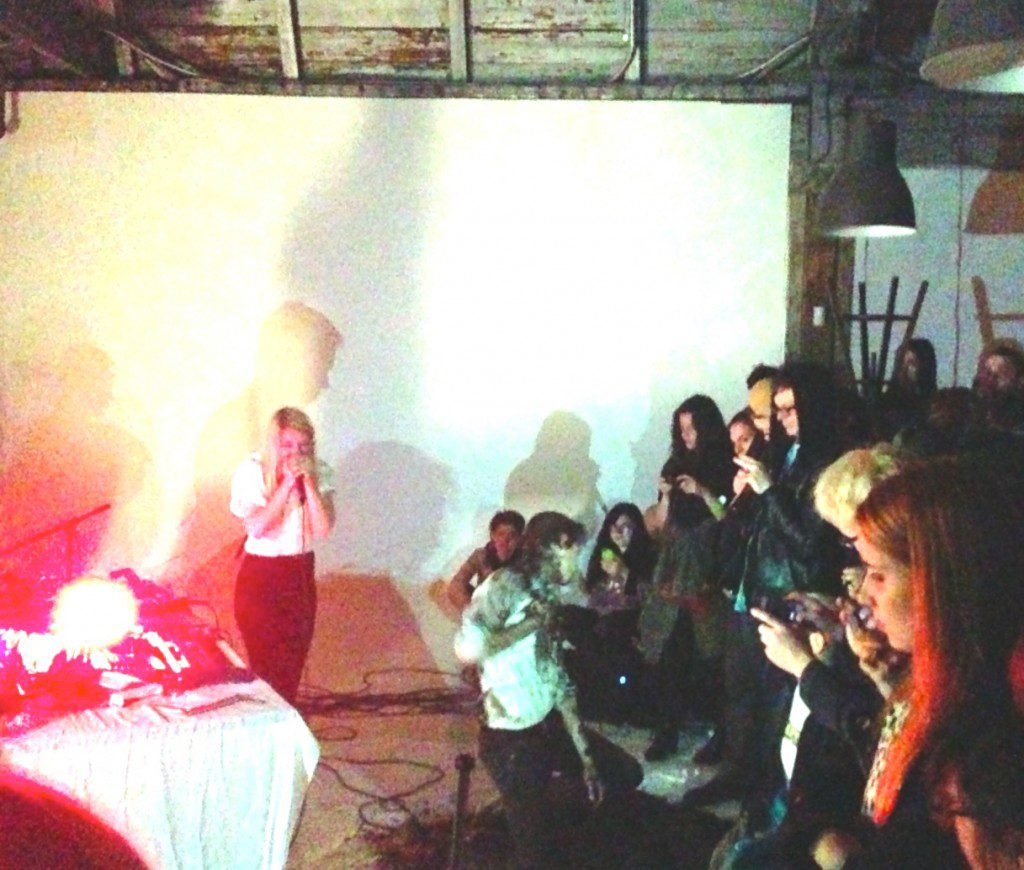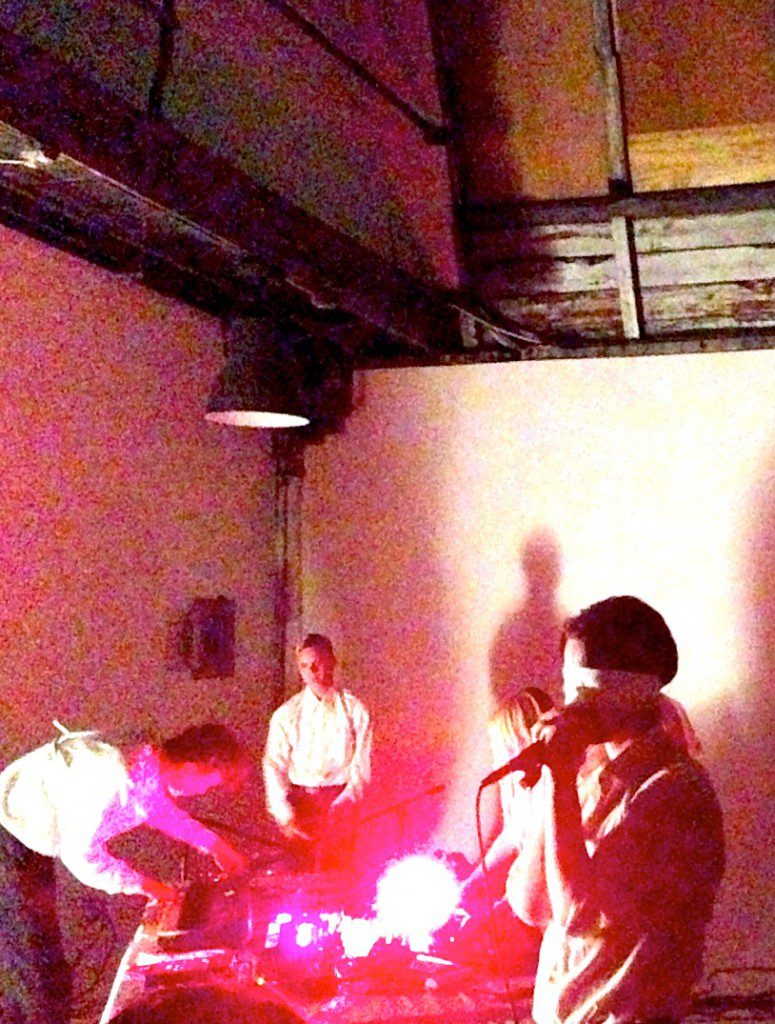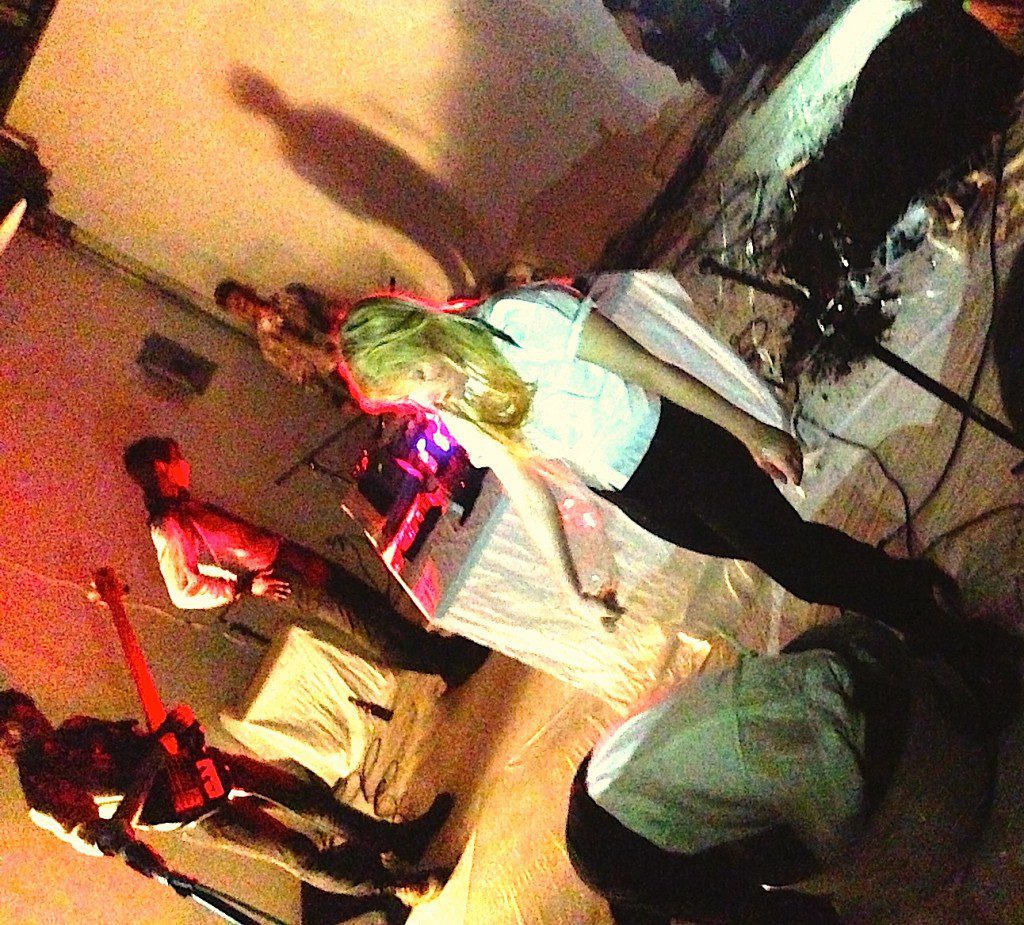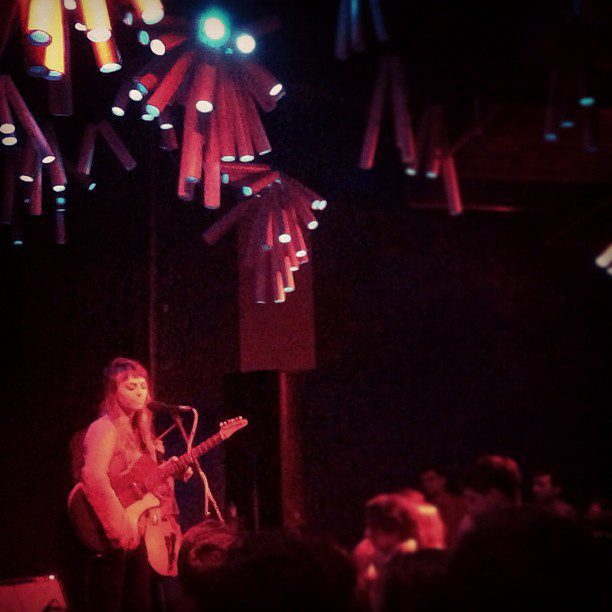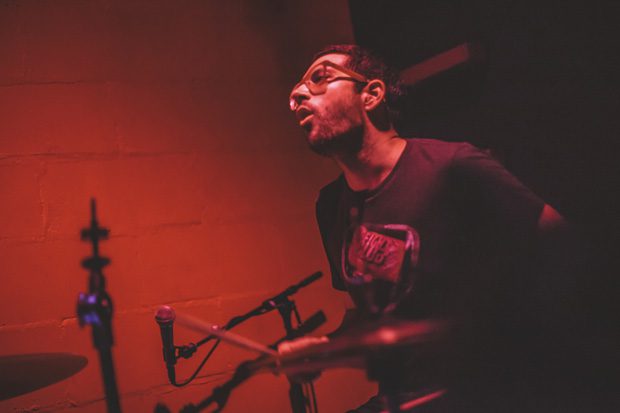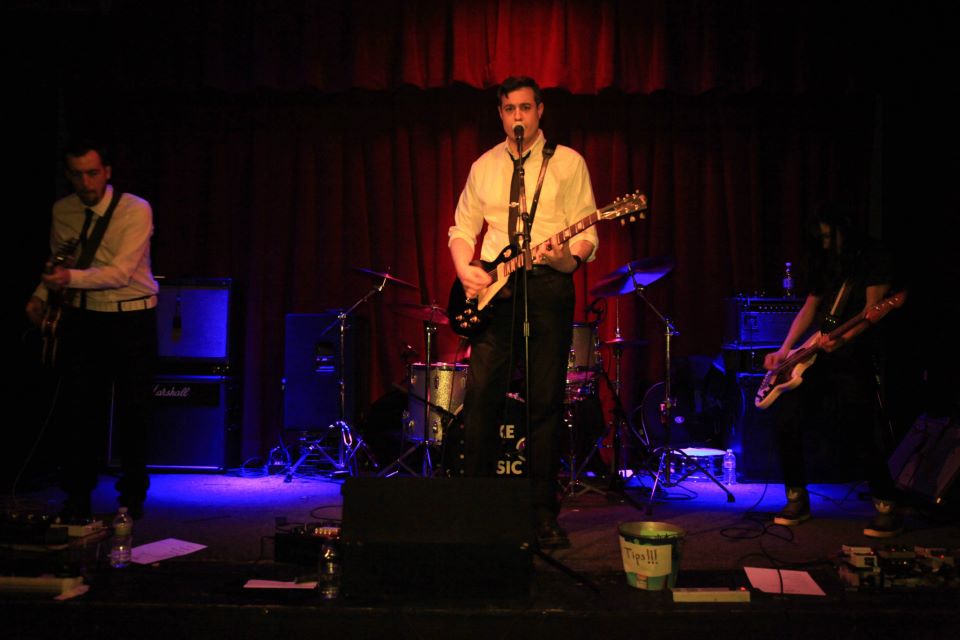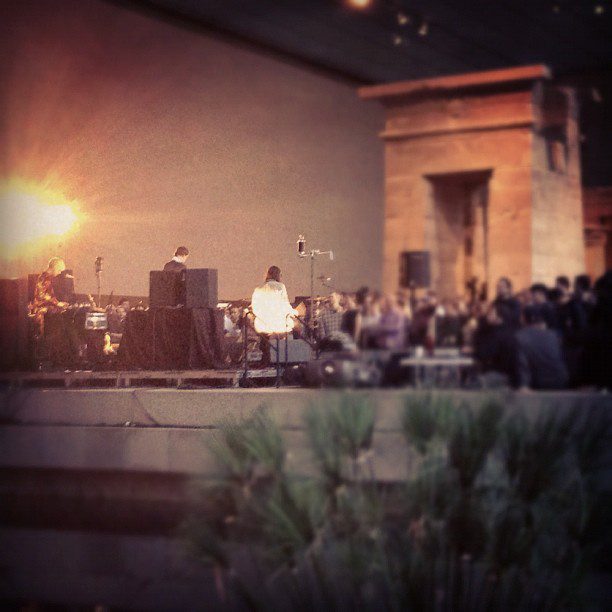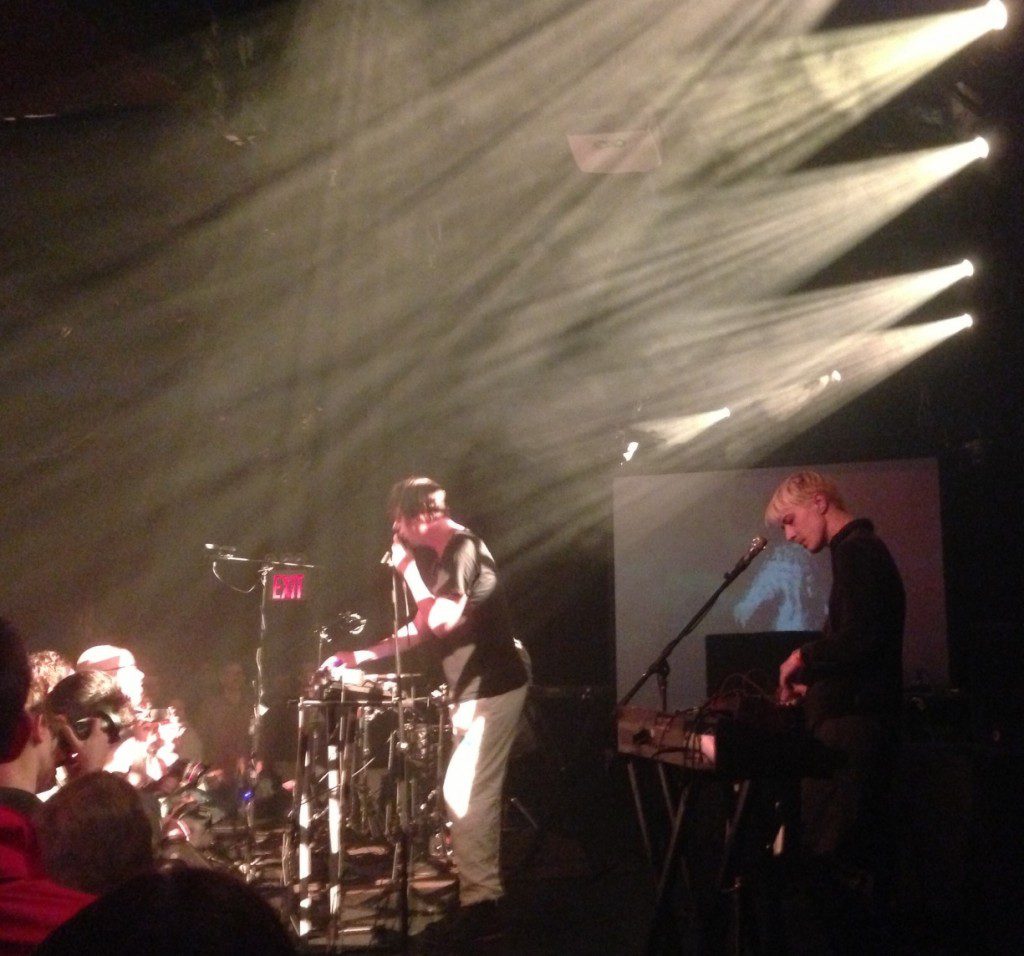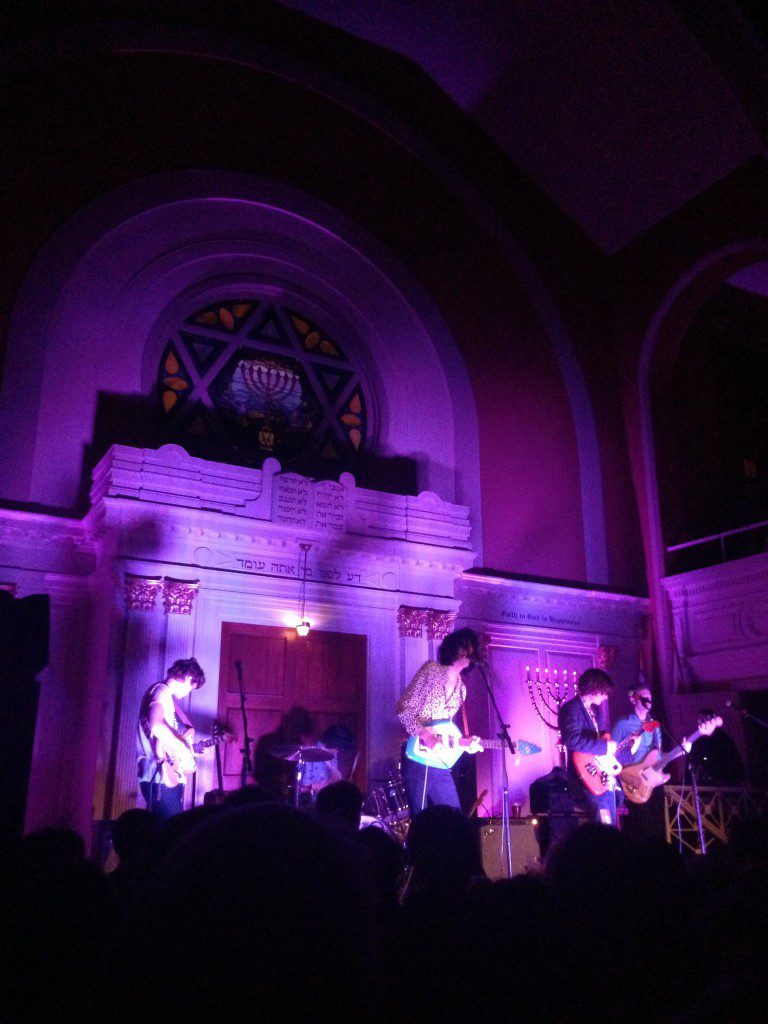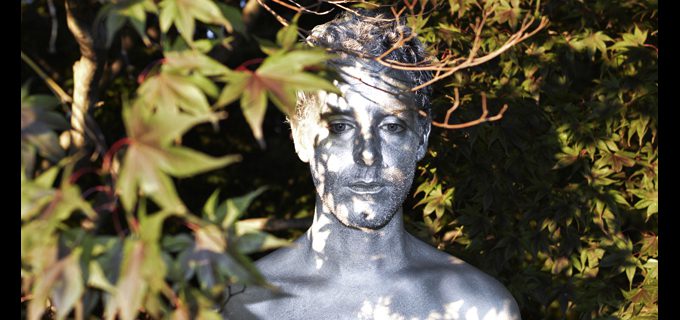
 Nightlands is the solo project of Dave Hartley, who plays bass for The War On Drugs. On his own, he makes dreampop records that reveal new elements upon each listen, like gems that throw off a different light every time you pick them up. His voice is lush and warm, and he often records himself singing in multiple registers, lending a choral quality to the vocal tracks–which is by far one of the most interesting aspects of his musical style. His first album, Forget The Mantra has expansive electronic underpinnings, while his new work, Oak Island (Secretly Canadian)–released earlier this year–has a decidedly more cohesive sonic narrative, with inventive, R&B-inspired brass lines and soaring, romantic melodies that make you feel like you’re floating in space, eliciting simultaneously sad and happy thoughts, perfect for anyone who’s recently had their heart broken, with just enough melencholia to open up those crevices of pain, but not too much that it takes you down. Take a listen to the album’s beautiful first track here.
Nightlands is the solo project of Dave Hartley, who plays bass for The War On Drugs. On his own, he makes dreampop records that reveal new elements upon each listen, like gems that throw off a different light every time you pick them up. His voice is lush and warm, and he often records himself singing in multiple registers, lending a choral quality to the vocal tracks–which is by far one of the most interesting aspects of his musical style. His first album, Forget The Mantra has expansive electronic underpinnings, while his new work, Oak Island (Secretly Canadian)–released earlier this year–has a decidedly more cohesive sonic narrative, with inventive, R&B-inspired brass lines and soaring, romantic melodies that make you feel like you’re floating in space, eliciting simultaneously sad and happy thoughts, perfect for anyone who’s recently had their heart broken, with just enough melencholia to open up those crevices of pain, but not too much that it takes you down. Take a listen to the album’s beautiful first track here.
AudioFemme was lucky enough to get a a little chat in with Hartely, to discuss his musical journey since the age of 13 when he picked up a bass for the first time, how the unconscious affects our creativity, and how we can all take steps to look at ourselves with more circumspection. Less heady stuff too, like Dave’s dream collaborations–which include one of my all time favorite producers (maybe you can guess who it is).
Here’s what he had to divulge to us:
Thanks for taking the time to speak with us, Dave!
AF: Tell us a little bit about your musical background? At what age did you know you wanted to be a musician? What kind of music did you listen to growing up? How many instruments do you play?
DH: I have always loved and been interested in music, but I think the shift occurred when I realized that I could feel good about myself through music instead of sports–when I was 13 or so. As hard as I tried, I just wasn’t great at basketball–the bass guitar came easily to me. I can actually remember being in my friend Andy’s basement and picking up his Peavey bass and cranking his massive Trace Elliot amp to 10 and hearing the entire house shake when I hit an open A note.. I went home and begged my Dad for a bass immediately.
The first tape I owned was ‘Born in the USA’, then came the Beatles, LL Cool J, Michael Jackson, Boyz 2 Men, things of that nature. In middle and high school I started to get really into classic rock and angsty grunge. Pretty standard stuff–I’m a child of the suburbs. It wasn’t until I moved to Philadelphia that my real musical education began.
Bass is my main instrument, but I’ve been playing guitar forever and trumpet since I was a boy. I can play drums and some keys/synth. Anybody who has been in bands for 15 years, well, you just learn by osmosis.
AF: What inspired your decision to go solo?
DH: I never considered it “going solo”, per se, I just started recording music by myself. Secretly Canadian wanted to release it, I was happy to have them do it, and soon enough I started trying to get a live band together. The War on Drugs (and other bands I play with) take up a lot of time, but there is also significant down time between records and tours. I wanted to write my own songs and stack vocals the way I like to.
AF: It’s been said that your new album, Oak Island, was conceived of with the help of your bedside tape recorder, which you used to document dreams and other night time musical epiphanies. That’s so cool! How do you think your unconscious affects your creative process?
DH: That was actually my last record, Forget the Mantra. I really think our brains are constantly taking stimulus, rearranging it, and spitting it back at us. When we are asleep it slips past our natural filters, I think. I’m always hearing melodies and things while I’m falling asleep.. I think they’re always there, it’s just really hard to tune into them. For Oak Island, I didn’t use this technique, simply because I’m better now at accessing that part of my brain. I can write songs without a bedside tape recorder…. although someday maybe I’ll go back to it.
AF: Is Oak Island a real place, or is it metaphorical?
DH: Both. It’s an island off the coast of Nova Scotia where people have searched for rumored buried treasure for hundreds and hundreds of years. It represents, to me, mystery without end.
AF: Are there aspects yourself that you discover through the music you make?
DH: Absolutely. I’m always surprised at the lyrics that come out of me. I don’t mean them to be coherent, but they often are extremely coherent. I didn’t mean to write ‘Other People’s Pockets’ about getting lied to by a friend, it just came out all at once.
AF: Do you think Carl Jung would like your new album? What about Freud, what would he think?
DH: It’d be pretentious of me to say yes, but perhaps Jung and Freud would be interested in analyzing my dream tapes–there are some really crazy, unhinged things on there.
AF: How does your new album differ from Forget The Mantra?
DH: It’s much fuller, with more low end. I didn’t really play any bass on Forget the Mantra because I wanted to test my musicianship as a non-bassist. Also, I’ve played bass for so long, that it is very hard to use it as a writing tool. It’s one of the last things I add. It’s much easier to write a song on an instrument you have little knowledge of. I also mixed Oak Island professionally with my good friend Brian McTear, so it is just sonically different. I also worked a bit more on songcraft, honing the lyrics and rearranging things a bit. Forget the Mantra was all about committing early.
AF: Which Mantra should we forget for that matter, and why?
DH: It’s just a play on words. It’s repeated and therefore becomes a mantra. It’s a paradox.
AF: How have your work and your artistic leanings generally evolved from your earlier days with The War On Drugs?
DH: I’ve learned a lot through The Drugs. I have tremendous respect for Adam and have definitely learned a lot from watching him and being around him, although we have totally different brains and working styles. When I started playing with him 7 years ago, I don’t think I was really capable of making an interesting recording.
AF: Your tagline is “Onwards and Inwards.” What does that journey entail for you? What do you think we can all do to begin taking those first steps inward?
DH: Great question. That is my tagline because ‘Onwards and Upwards’ never made sense to me. I’ve never been a social climber. In a fit of anxiety and depression I nearly enrolled in law school a few years ago–that would have been a tremendous mistake. I am not a mystic or an academic or a rigorous intellectual; I simply think that we must be careful that this experience of being human on the planet Earth doesn’t just wash over us as “normal” or, heaven forbid, “boring”.
AF: If you could collaborate artistically with anyone, living or historical, who would it be?
DH: I’d love to work with Brian Eno. He is a hero of mine. He is a man whose talent is almost exclusively this uncanny ability to look differently at things.
I would also love to play bass in the Rolling Stones.
AF: If you weren’t a musician what would you be doing with your life?
DH: Writing elevated science-fiction.
AF: What is the most inspiring place in the world for you?
DH: San Sebastian, Spain.
AF: Is there a superpower you wish you possessed?
DH: No.
AF: What exciting stuff do you have planned for the coming year?
DH: Some fun tours, recording projects and some sojourns across the continent and world.
Thank you so much for talking to us!! Your new album is a real work of art.


